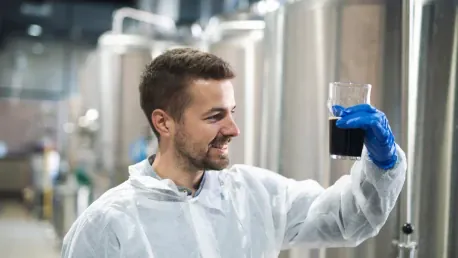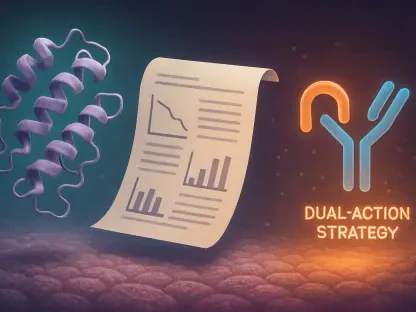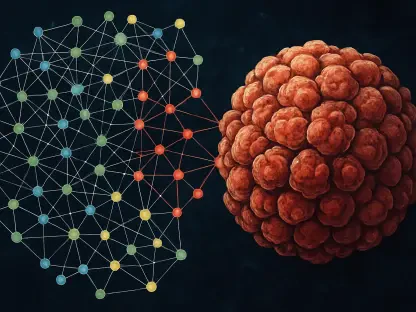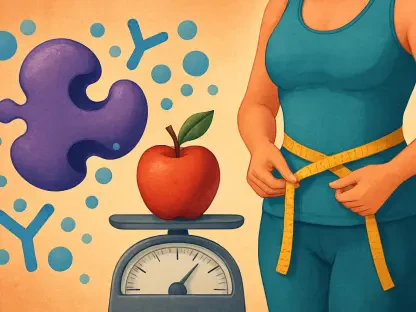The global market for single-use bioreactors (SUBs) is poised for significant growth, with projections indicating an increase from USD 4.4 billion in 2024 to USD 9.1 billion by 2029. This remarkable expansion, driven by a compound annual growth rate (CAGR) of 15.4%, underscores the transformative potential of SUBs in the biopharmaceutical industry. As disposable, pre-sterilized systems, SUBs offer enhanced efficiency and flexibility in biomanufacturing processes, making them an increasingly attractive option for pharmaceutical and biotechnology companies.
Market Drivers and Growth Factors
Rising Adoption Among CDMOs, CMOs, and SMEs
The growing preference for SUBs among contract development and manufacturing organizations (CDMOs), contract manufacturing organizations (CMOs), and small-to-medium enterprises (SMEs) is a key driver of market growth. These entities are drawn to the advantages of SUBs, such as reduced capital investment, decreased water and energy consumption, and accelerated setup and batch changeovers. Additionally, the expanding markets for biologics and biosimilars further fuel this trend, as SUBs offer a cost-effective and efficient solution for biomanufacturing.
Companies are increasingly adopting SUBs due to their operational efficiency and ability to meet the unique needs of each manufacturing project. The flexibility to switch rapidly between various production processes without significant downtime is a significant advantage, promoting faster production cycles and thus ensuring quicker time-to-market for new therapies. SUBs’ lower upfront costs and reduced labor expenses offer a more attractive proposition compared to traditional stainless-steel reactors, making them especially appealing for innovative but resource-constrained small and medium-sized enterprises.
Advantages Over Conventional Bioreactors
SUBs provide several inherent benefits over traditional bioreactors, making them a preferred choice for many biopharmaceutical companies. The lower contamination risks are particularly crucial in maintaining product integrity and meeting strict regulatory standards. Conventional bioreactors often necessitate rigorous and frequent cleaning, sterilization, and validation processes, which are both time-consuming and costly. In contrast, the disposable nature of SUBs eliminates these requirements, allowing for more streamlined and cost-effective production.
Additionally, SUBs offer significant advantages in terms of scalability and rapid configuration changes. They are particularly advantageous in processes where high flexibility is required, such as the production of biologics and biosimilars. SUBs allow companies to efficiently manage different stages of drug development and production under varied conditions, facilitating quicker responses to market demands. As a result, the adoption of SUBs is more pronounced in regions like North America and Europe, where extensive regulatory frameworks necessitate reliable, efficient, and flexible biomanufacturing solutions.
Market Restraints and Challenges
Extractables and Leachables
Despite their many benefits, SUBs face certain challenges that could hinder market growth. One such challenge is the issue of extractables and leachables, which can affect product quality and safety. Extractables are chemical compounds that can migrate from bioreactor materials under certain conditions, while leachables are those that actually migrate into the product during the manufacturing process. These substances can pose significant risks if they interfere with the biological activity or stability of the final product.
Regulatory authorities have stringent guidelines regarding the acceptable levels of extractables and leachables, and compliance is mandatory. The challenge lies in the ability of manufacturers to mitigate and control these substances without compromising the efficiency and advantages of SUBs. Moreover, extensive testing and validation are required to ensure that SUBs do not adversely affect product quality, adding to the operational costs and complexity. These considerations necessitate ongoing research and advancements in material science to develop safer and more reliable single-use systems.
Regulatory Compliance and PFAS Restrictions
Regulatory compliance is another critical challenge for the SUB market. The stringent regulations governing biopharmaceutical production require manufacturers to ensure that their products meet high standards of safety and efficacy. Compliance with regulations such as Good Manufacturing Practices (GMP) and robust quality assurance frameworks is non-negotiable and involves rigorous documentation and validation processes.
Additionally, restrictions on per- and polyfluoroalkyl substances (PFAS) can impact the development and use of SUBs. PFAS are often used in the manufacturing of bioreactor components due to their durable and non-reactive properties. However, emerging concerns about their environmental persistence and potential health hazards have led to regulatory scrutiny and restrictions. As a result, manufacturers must find alternative materials without compromising the performance and reliability of SUBs, posing yet another challenge in product development and market adaptation.
Opportunities in Emerging Economies and Hybrid Facilities
Untapped Markets in Emerging Economies
The SUB market presents numerous opportunities, particularly in untapped emerging economies. These regions offer significant growth potential due to their expanding biopharmaceutical industries and increasing demand for cost-effective biomanufacturing solutions. Emerging economies are investing heavily in biotechnology and pharmaceutical sectors to cater to regional healthcare needs, thus creating a fertile ground for SUB adoption.
By entering these markets, SUB manufacturers can capitalize on the growing need for efficient and flexible bioreactor systems. Local collaborations and partnerships with regional biopharmaceutical companies and research institutions can further facilitate market penetration. Additionally, the reduced infrastructure requirements of SUBs make them an attractive option for emerging market players who may not have the resources to invest in conventional bioreactor setups.
Adoption of Hybrid Facilities
Another promising opportunity lies in the adoption of hybrid facilities that integrate both single-use and traditional stainless-steel systems. These hybrid facilities offer the best of both worlds, combining the flexibility and cost savings of SUBs with the robustness and scalability of conventional bioreactors. This approach allows biopharmaceutical companies to optimize their production processes and meet the diverse needs of their product portfolios.
Hybrid facilities provide an adaptable solution, enabling companies to efficiently scale up production while maintaining high levels of operational flexibility. This hybrid approach is particularly beneficial for multi-product facilities where varied production processes coexist. Companies can leverage the advantages of SUBs for specific processes while relying on traditional systems for others, thus achieving a balanced, cost-effective, and high-performing manufacturing environment.
Regional Market Dynamics
North America: Leading the Way
The United States leads the global SUB market, driven by its dominance in biopharmaceutical research and development. American pharmaceutical companies are at the forefront of developing biologics and biosimilars, and they are increasingly adopting single-use systems for their operational efficiency and cost-effectiveness. The prevalence of patent expirations in the US further drives the biopharmaceutical industry, with strategies focused on the development of biosimilars and innovative routes and formulations for patented drugs.
The presence of a well-established healthcare infrastructure, significant investment in R&D, and supportive regulatory frameworks have enabled the North American market to thrive. Organizations like the FDA have stringent guidelines but also offer programs to expedite the development of essential therapies, thus incentivizing innovations in biomanufacturing. As SUB technology continues to evolve, its adoption across biopharmaceutical R&D and production is expected to scale up further, underscoring the region’s leading position in this domain.
Europe: A Strong Contender
Europe is another key region for the SUB market, with a robust biopharmaceutical industry and a strong focus on innovation. The extensive use of SUBs in biopharmaceutical R&D and production processes in Europe is driven by the region’s rigorous regulatory standards and the need for efficient and flexible biomanufacturing solutions. The regulatory environment in Europe ensures that SUBs are thoroughly tested and validated, maintaining high safety and efficacy standards.
European countries like Germany, the United Kingdom, and France are major contributors to the growth of the SUB market. The emphasis on sustainable practices and reduced environmental impact further incentivizes the adoption of single-use technologies. With increasing investments in biopharmaceutical manufacturing capabilities and continuous advancements in bioprocessing technologies, Europe is poised to maintain a strong presence in the global SUB market. The region’s dedication to innovation and quality continues to drive the development and application of efficient single-use systems.
Types of Single-Use Bioreactors
Stirred-Tank Bioreactors
Stirred-tank bioreactors are highly favored for their scalability and mixing efficiency. These bioreactors are widely used in the production of monoclonal antibodies (mAbs), vaccines, and other therapeutic proteins due to their ability to provide a controlled and homogeneous environment for cell cultivation. The scalability of stirred-tank bioreactors makes them an ideal choice for both small-scale R&D and large-scale production processes.
The versatility of stirred-tank bioreactors allows for various configurations, enabling the optimization of bioproduction parameters to enhance yield and quality. These bioreactors can be designed to accommodate different working volumes and agitation speeds, offering significant flexibility for different stages of cell culture. The precision in controlling temperature, pH, and oxygen levels ensures that cell growth and productivity are maximized, making it a popular choice across a wide range of applications.
Wave-Induced Bioreactors
Wave-induced bioreactors are gaining traction for their cost-effectiveness and ability to speed up production timelines. The adoption of SUBs reduces the need for extensive cleaning and validation processes associated with traditional bioreactors, thus cutting down on labor and operational costs. Moreover, their scalability and ease of implementation allow for more agile responses to market demands. This growth is also fueled by advancements in biopharmaceutical research and development, further cementing SUBs as a valuable technological innovation in modern biomanufacturing.









